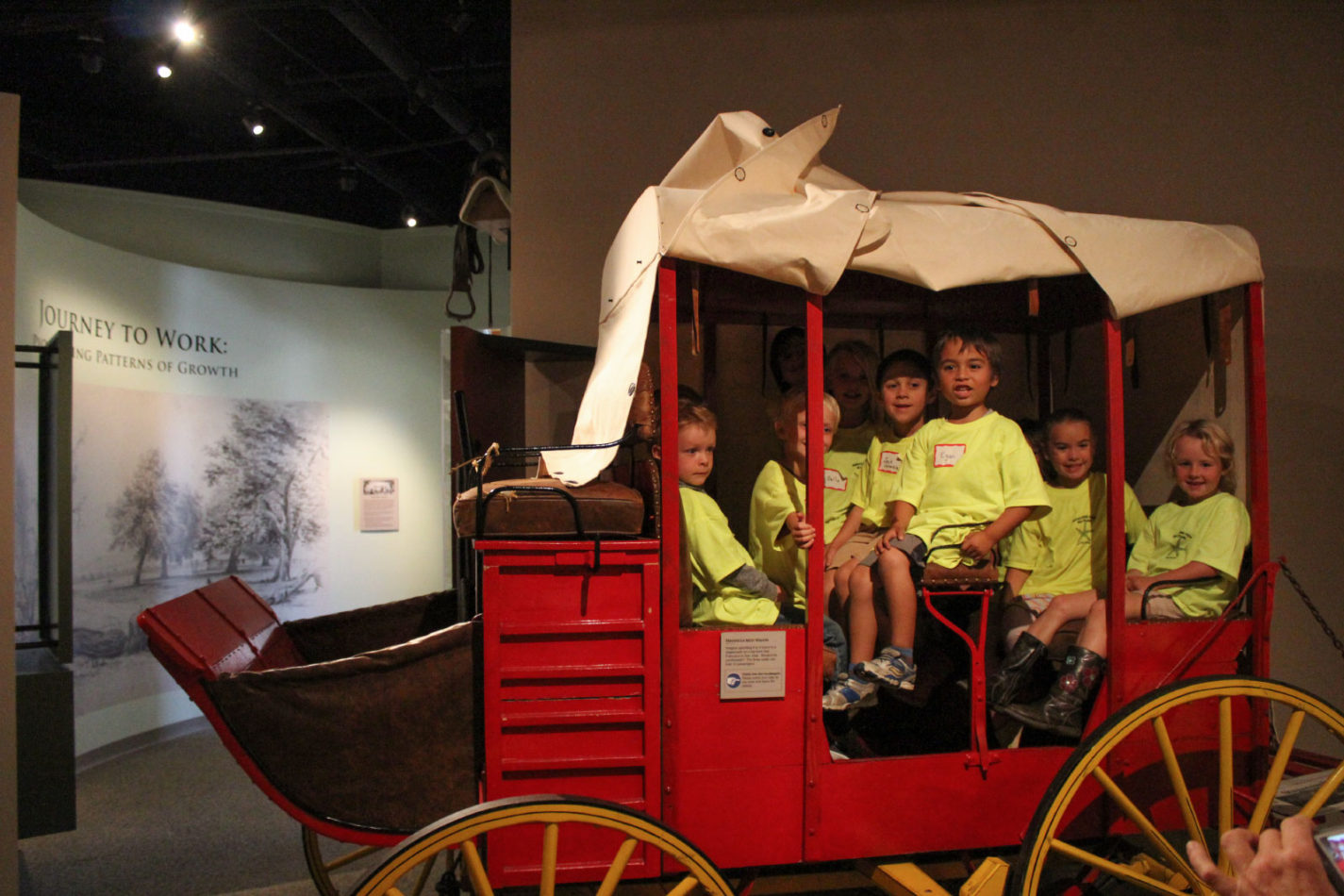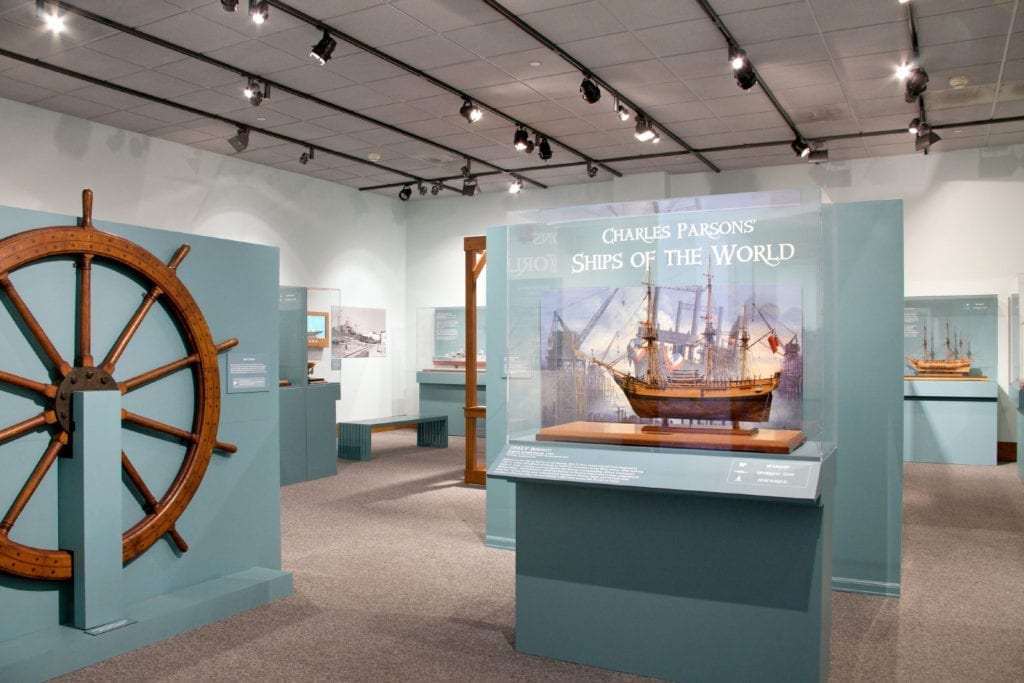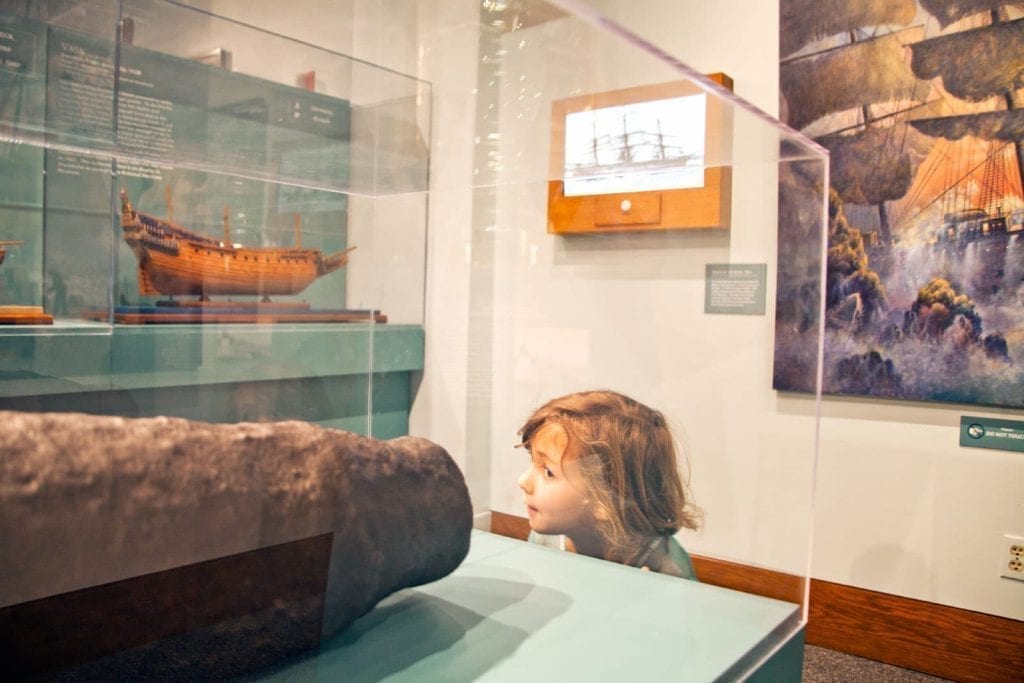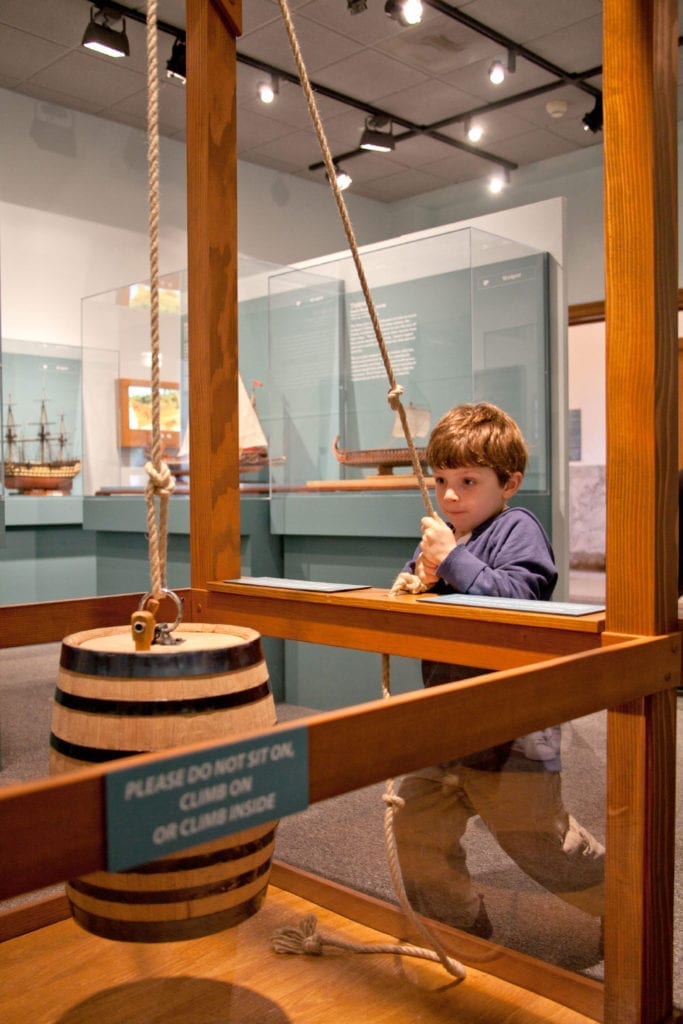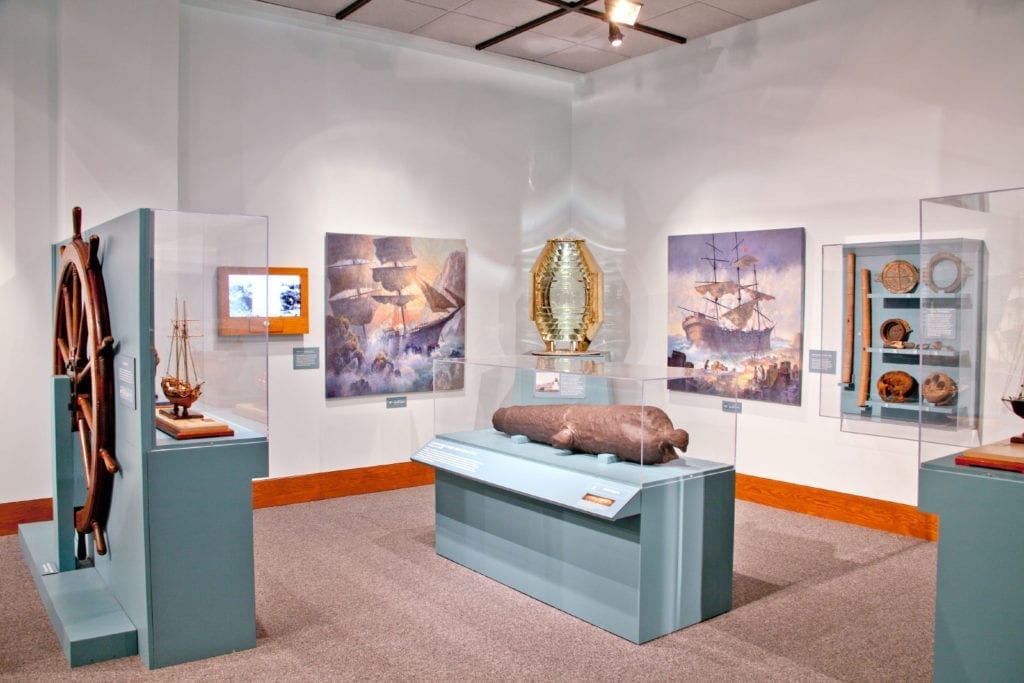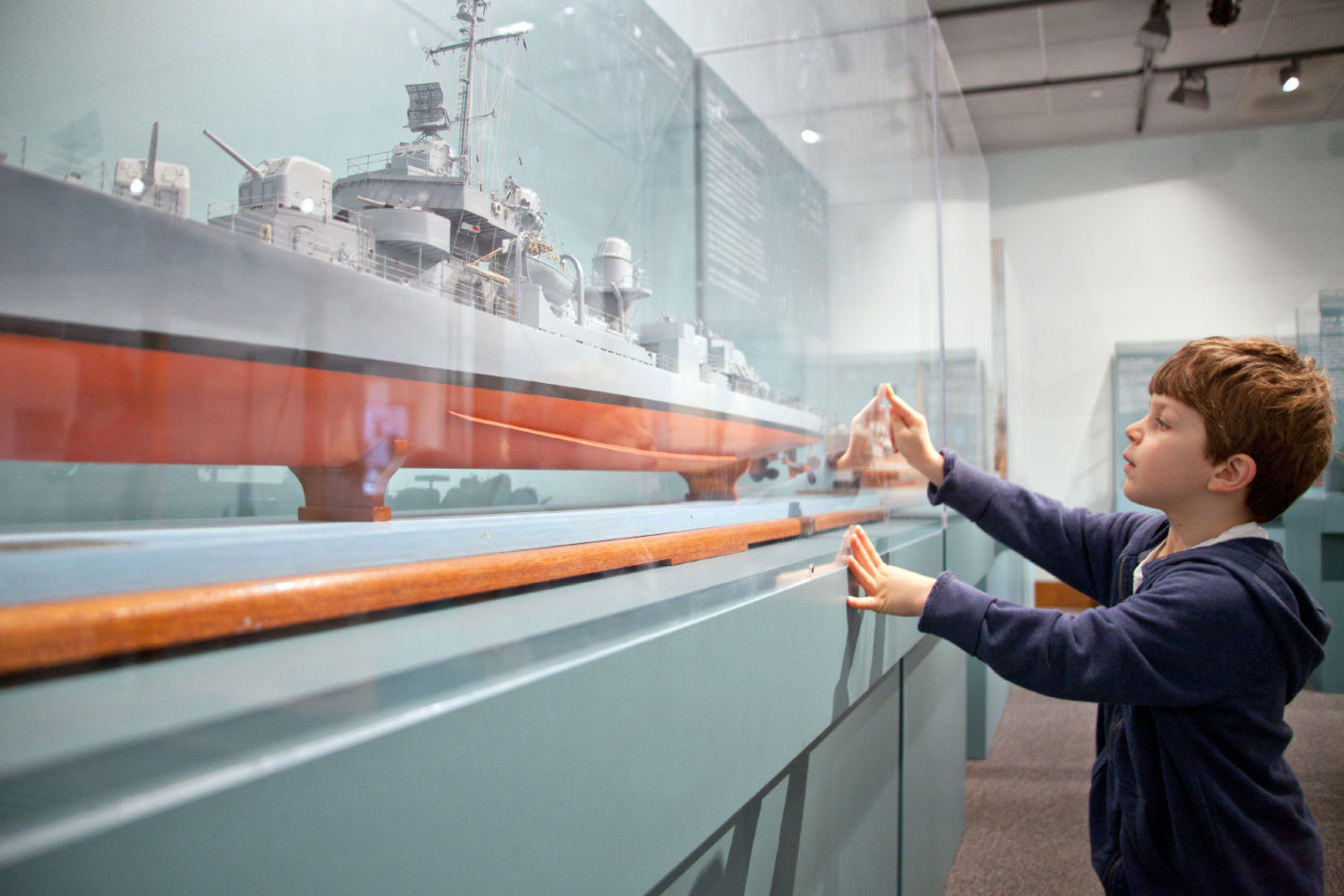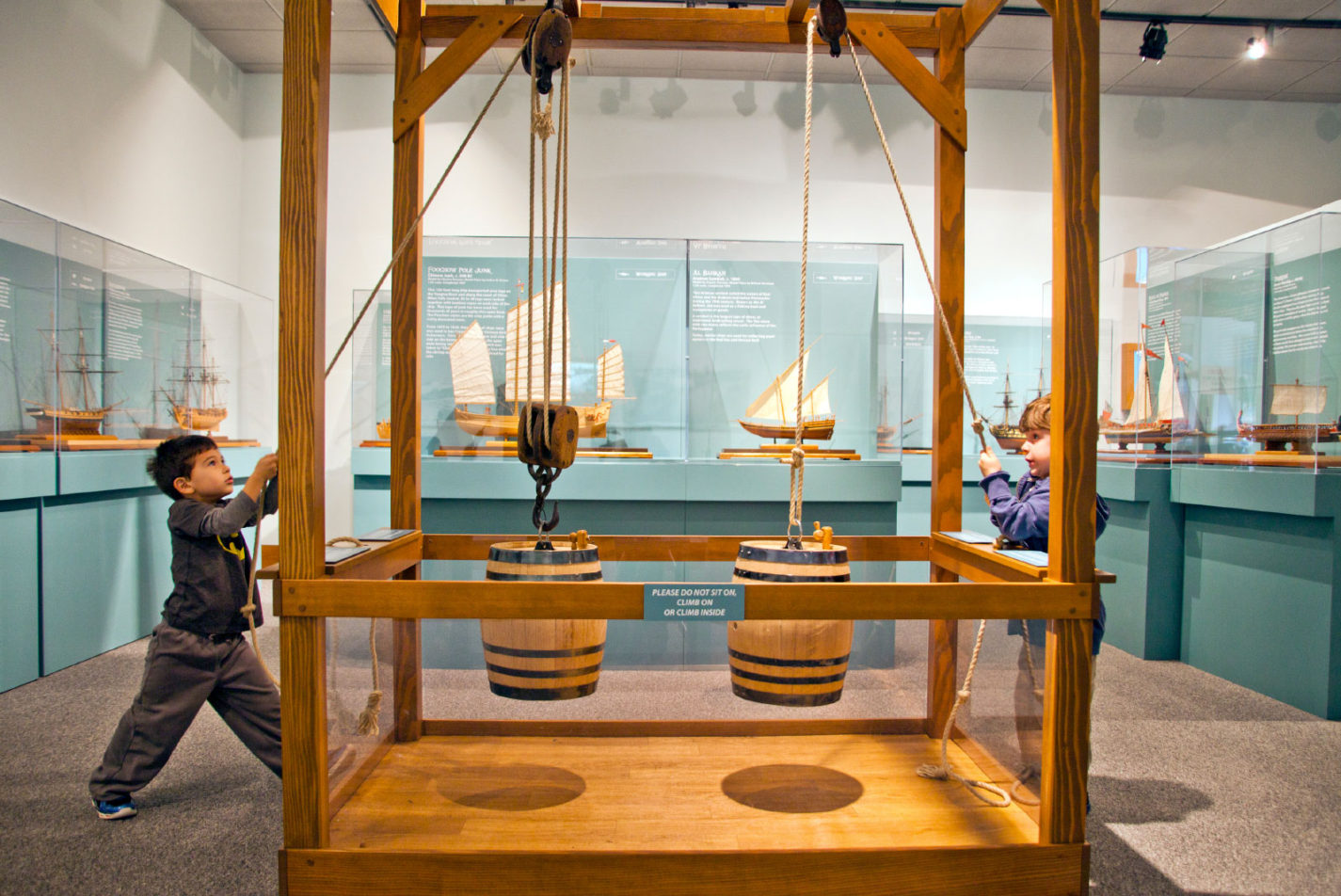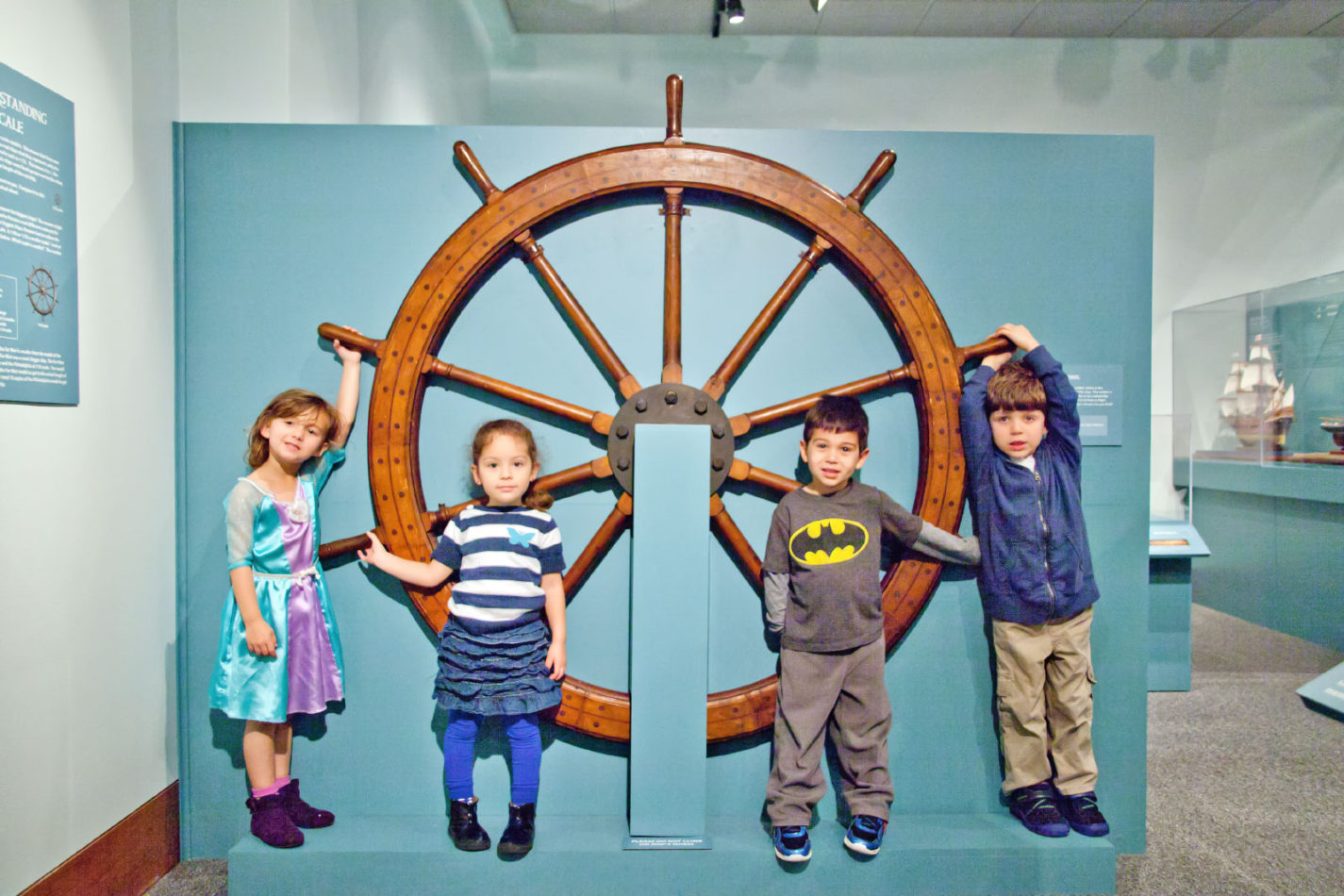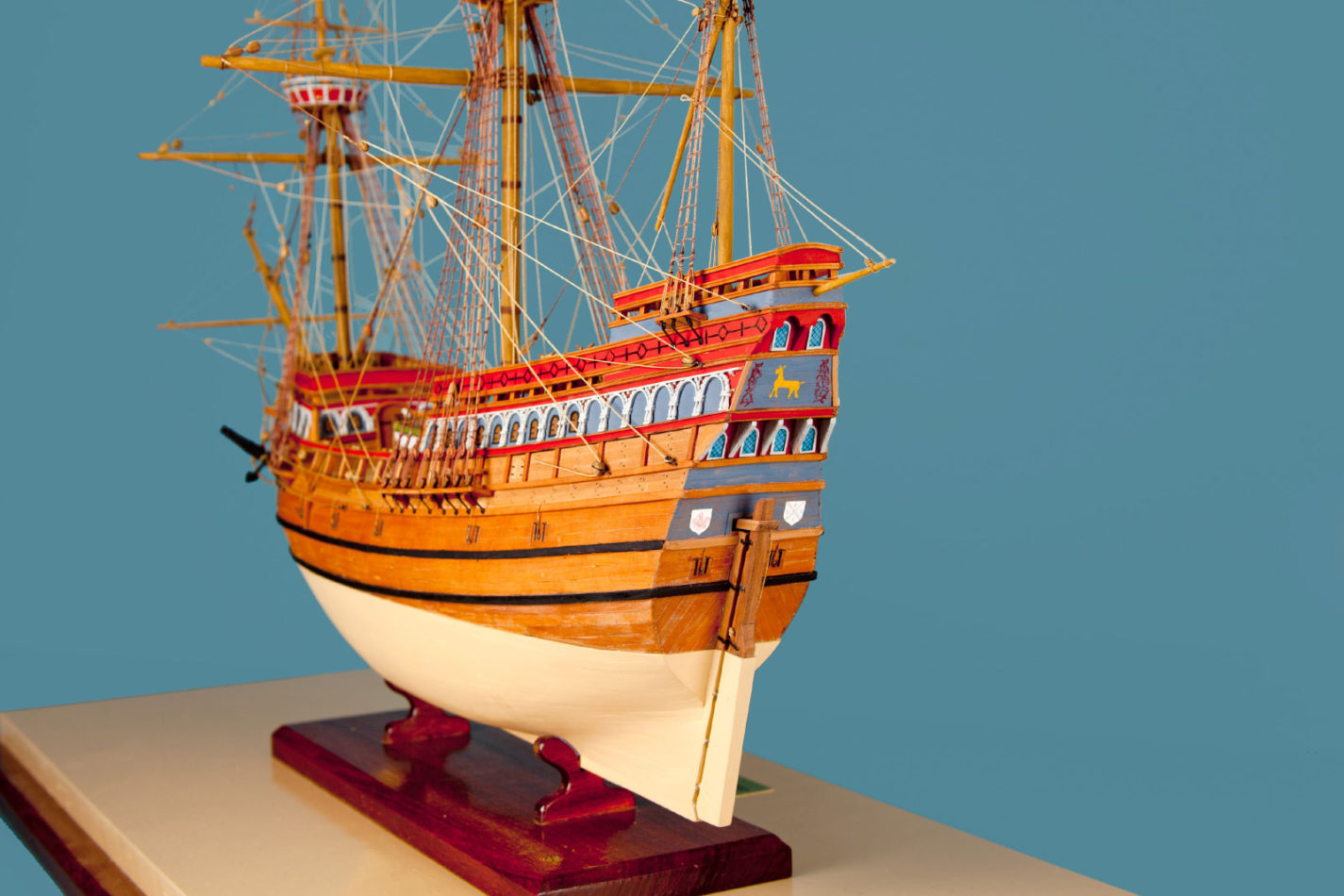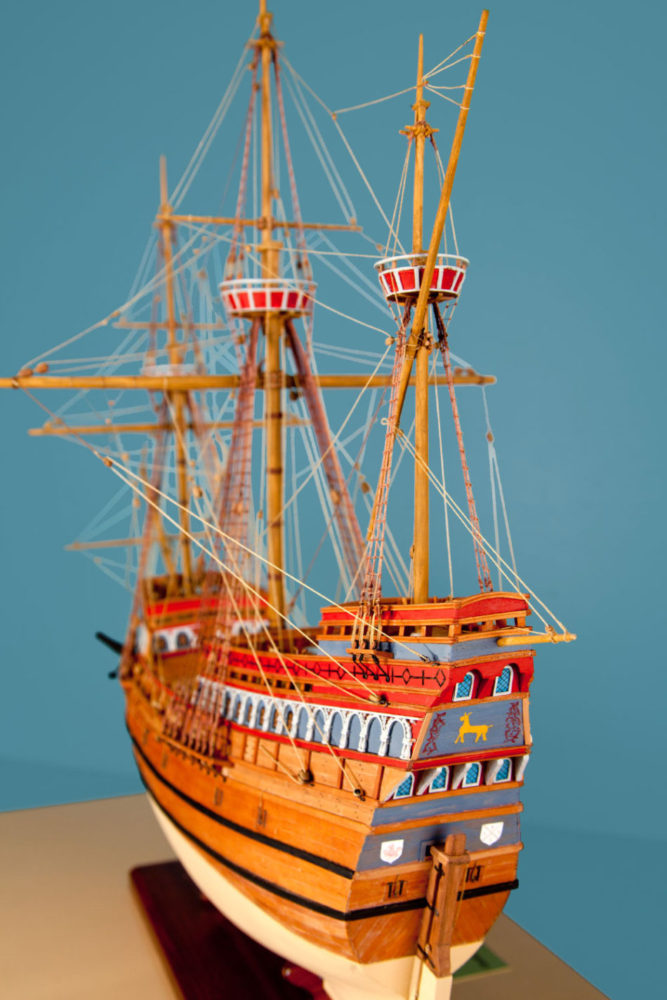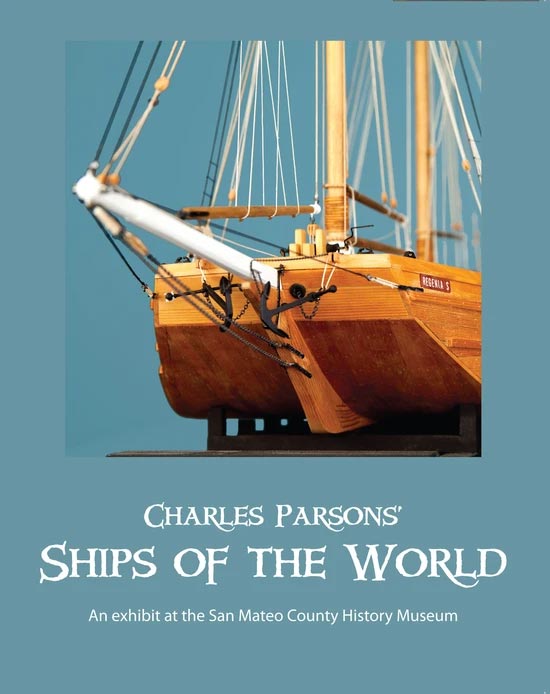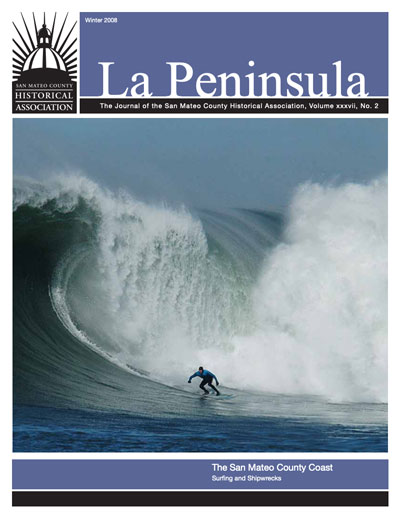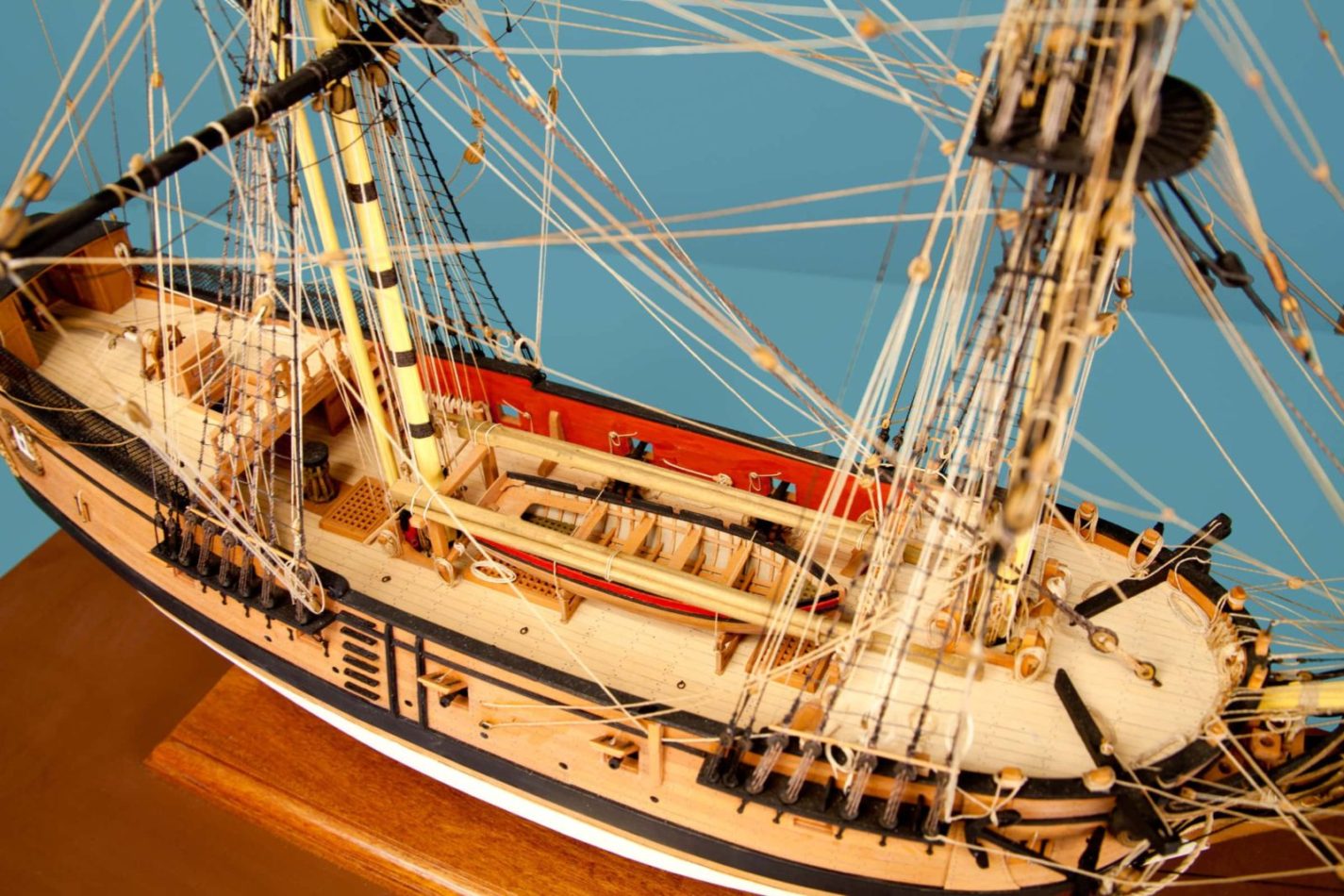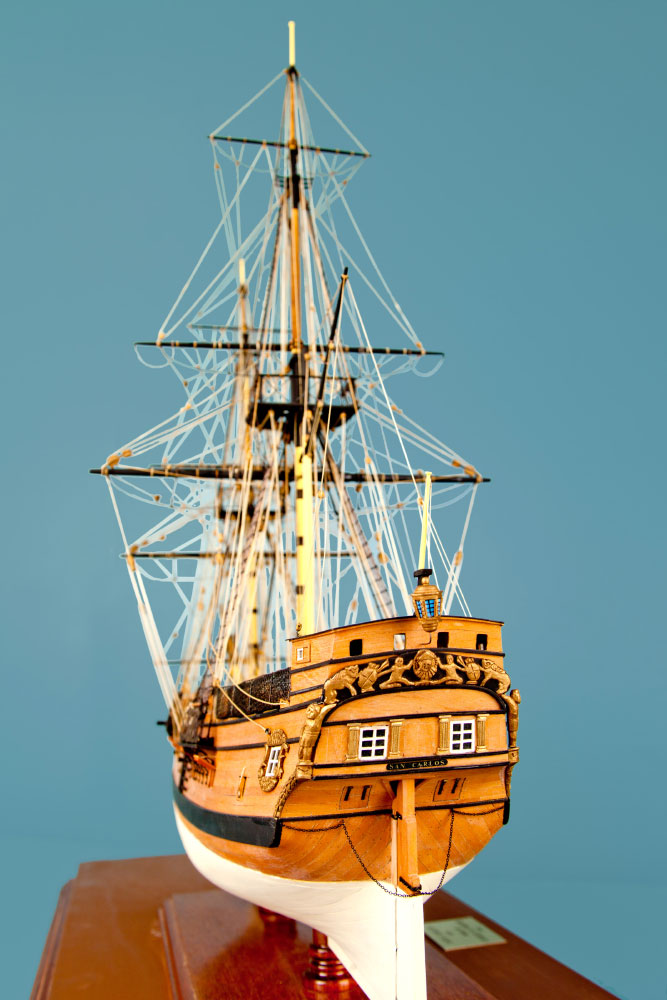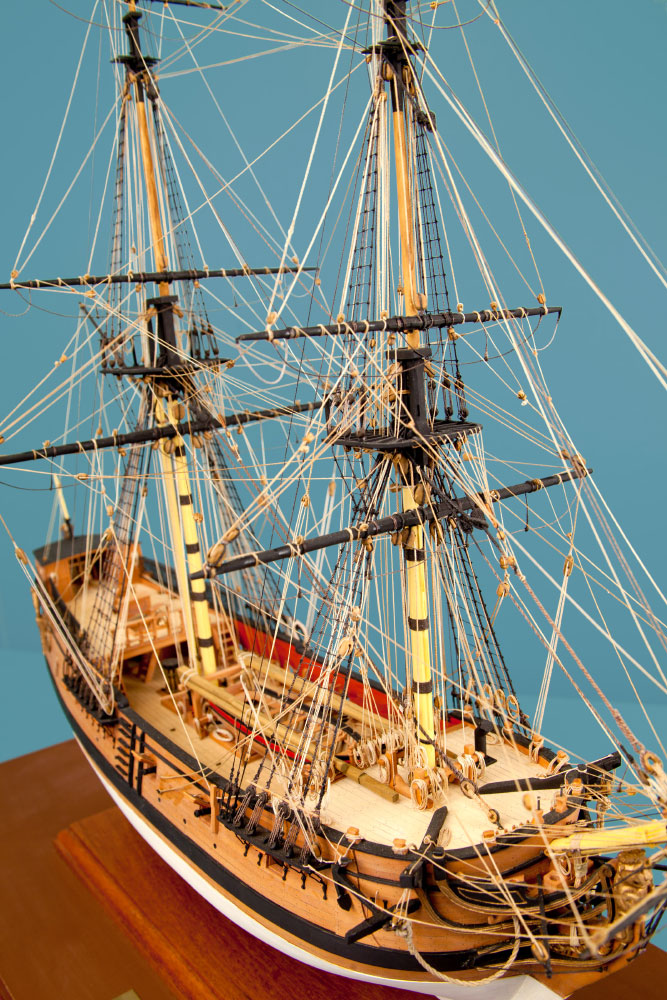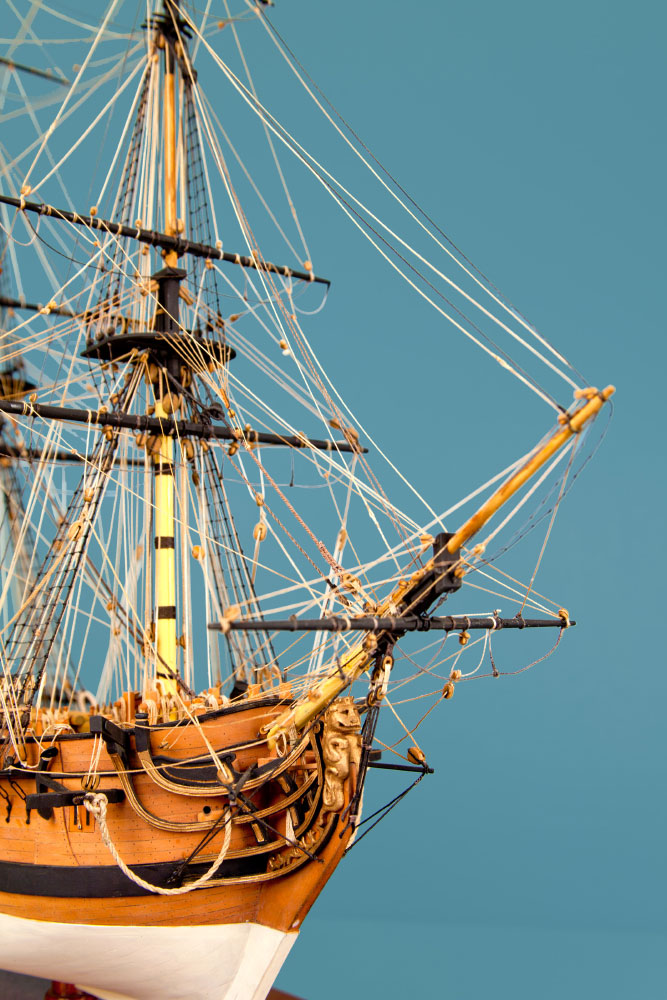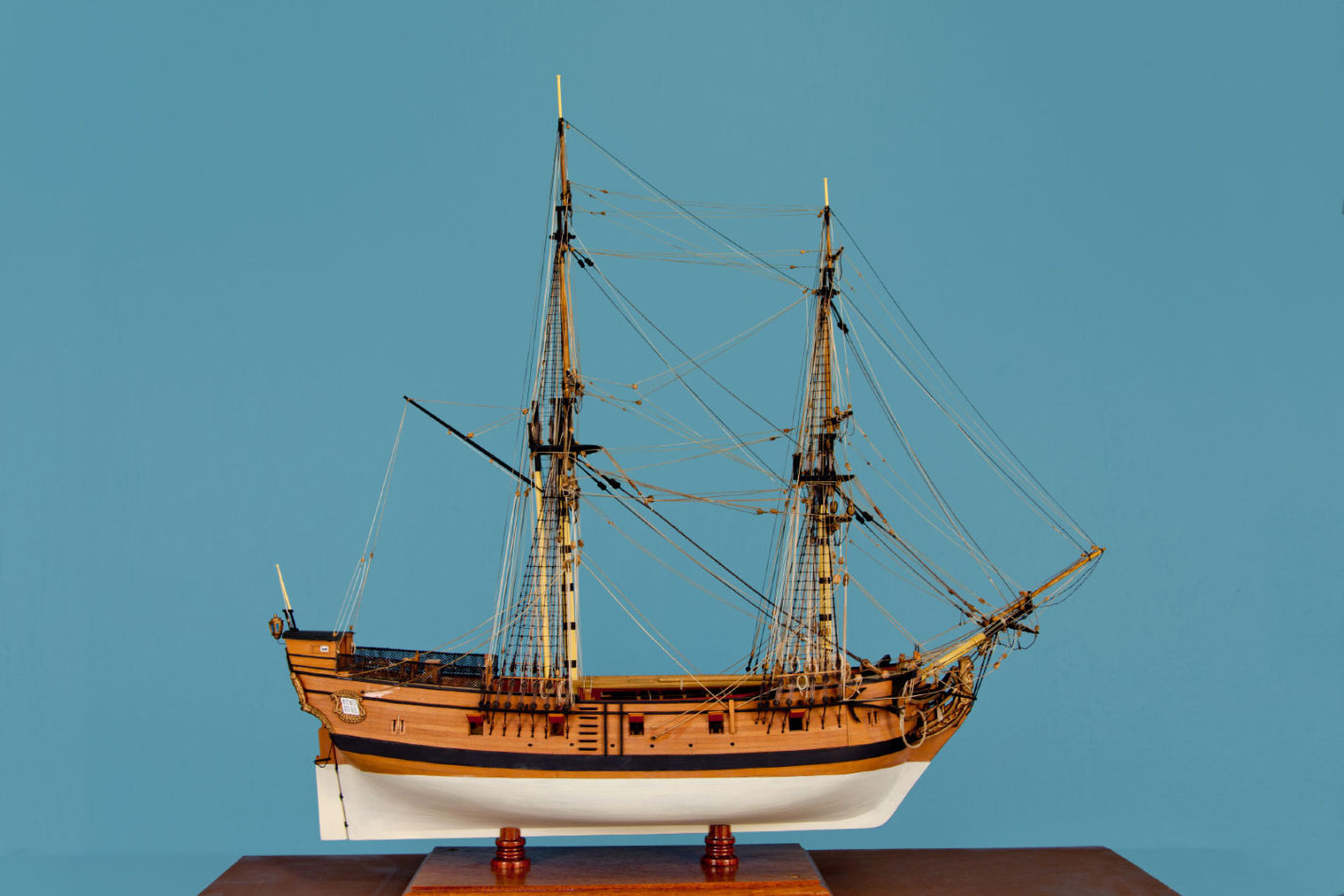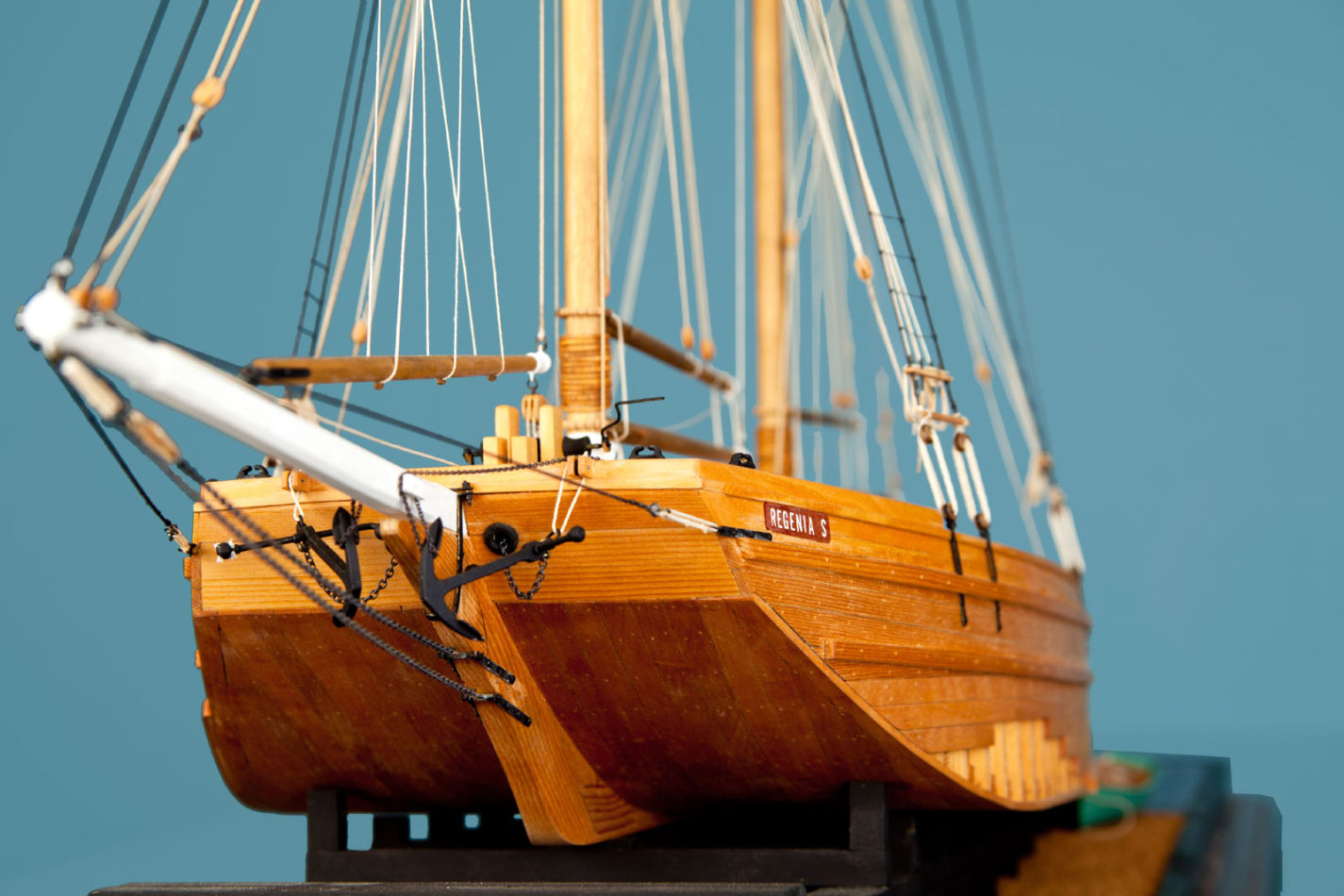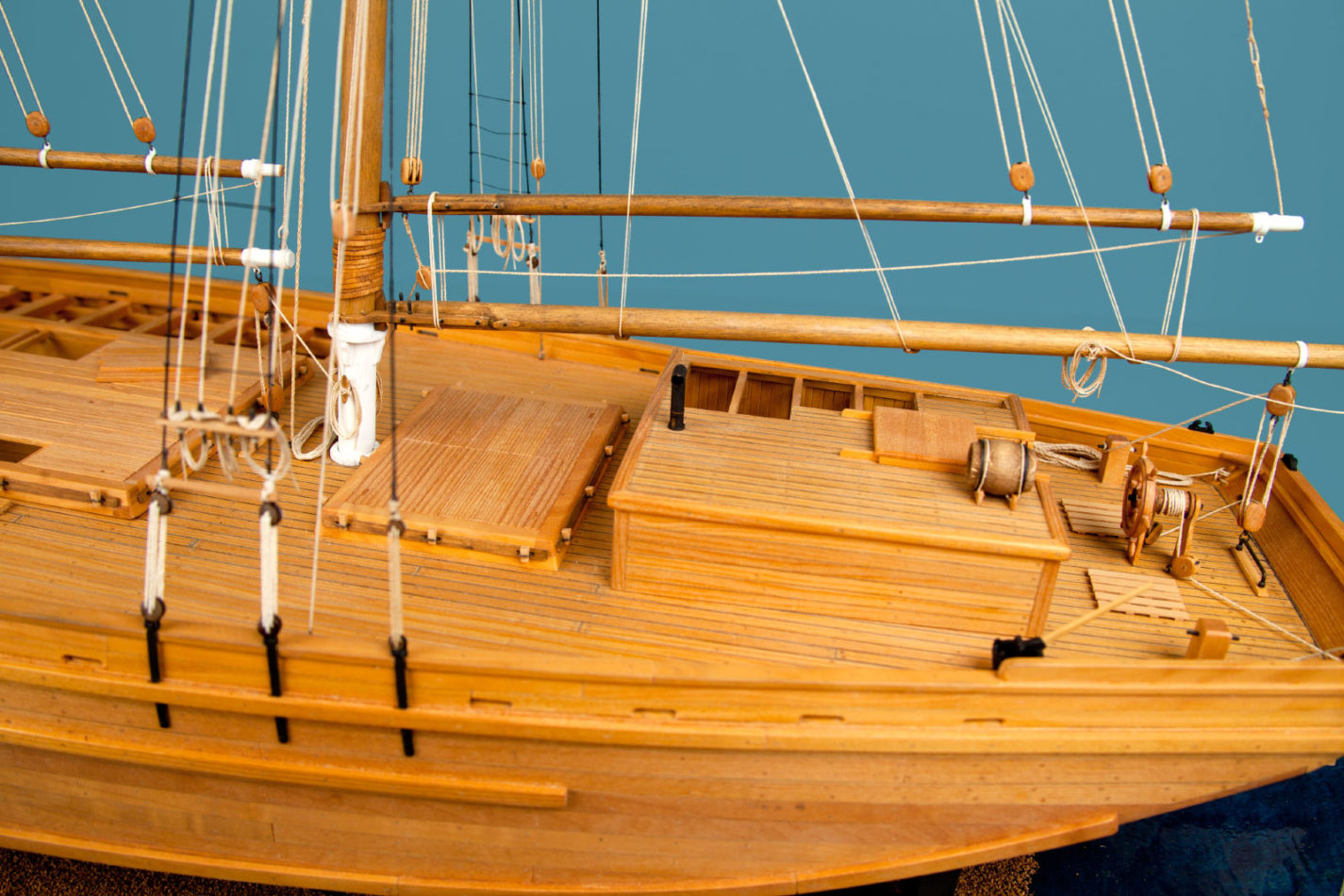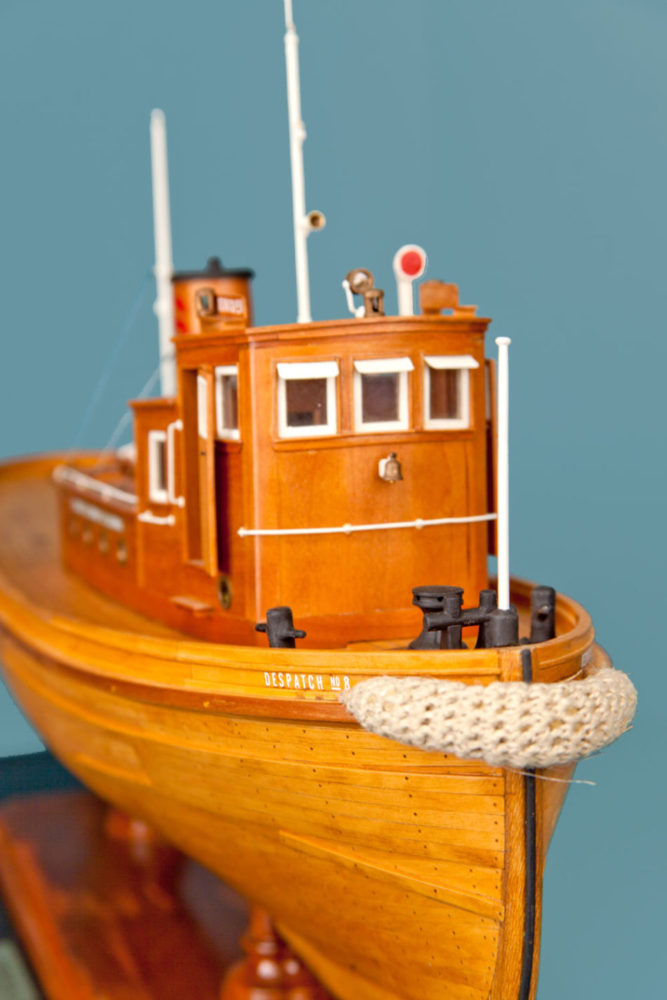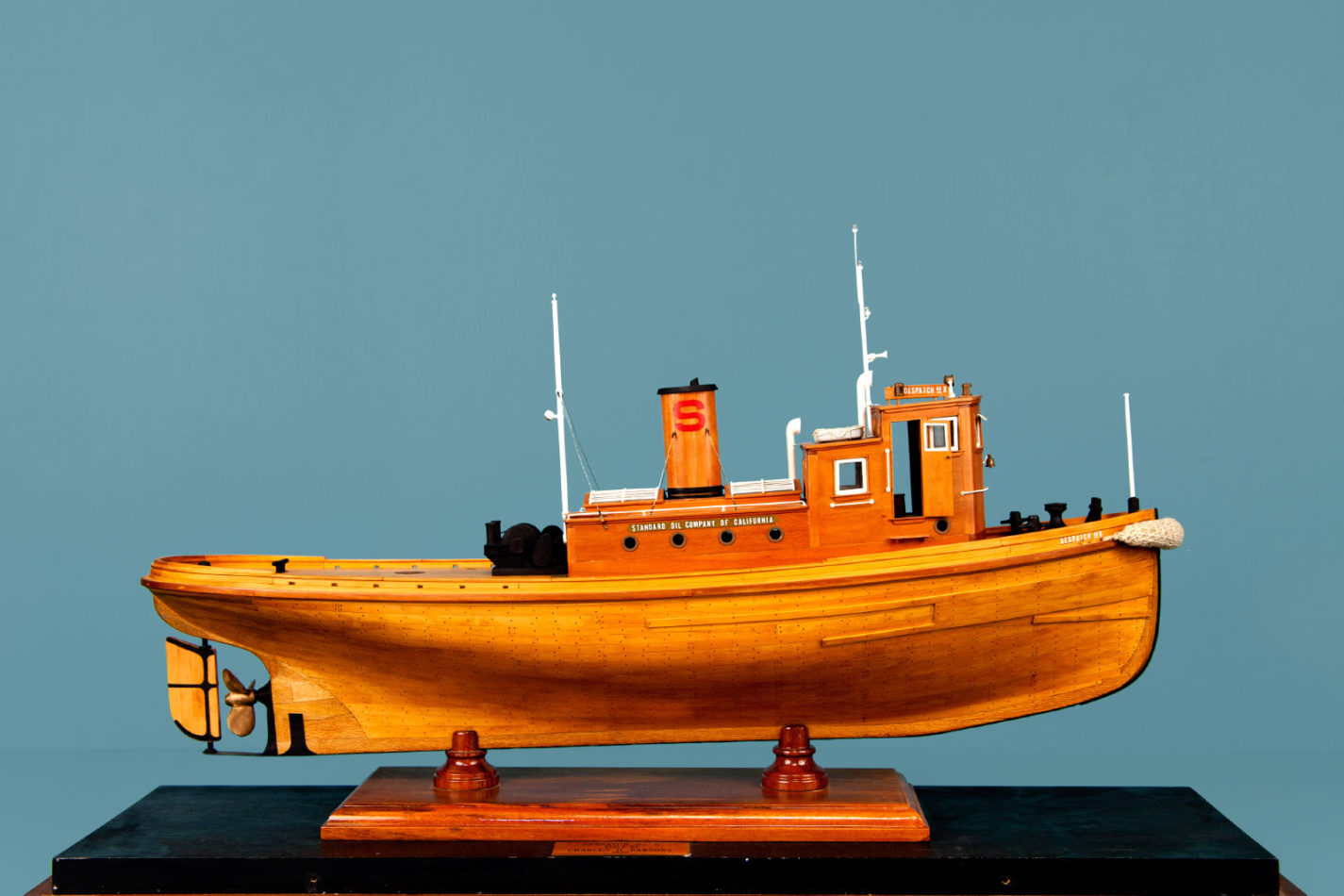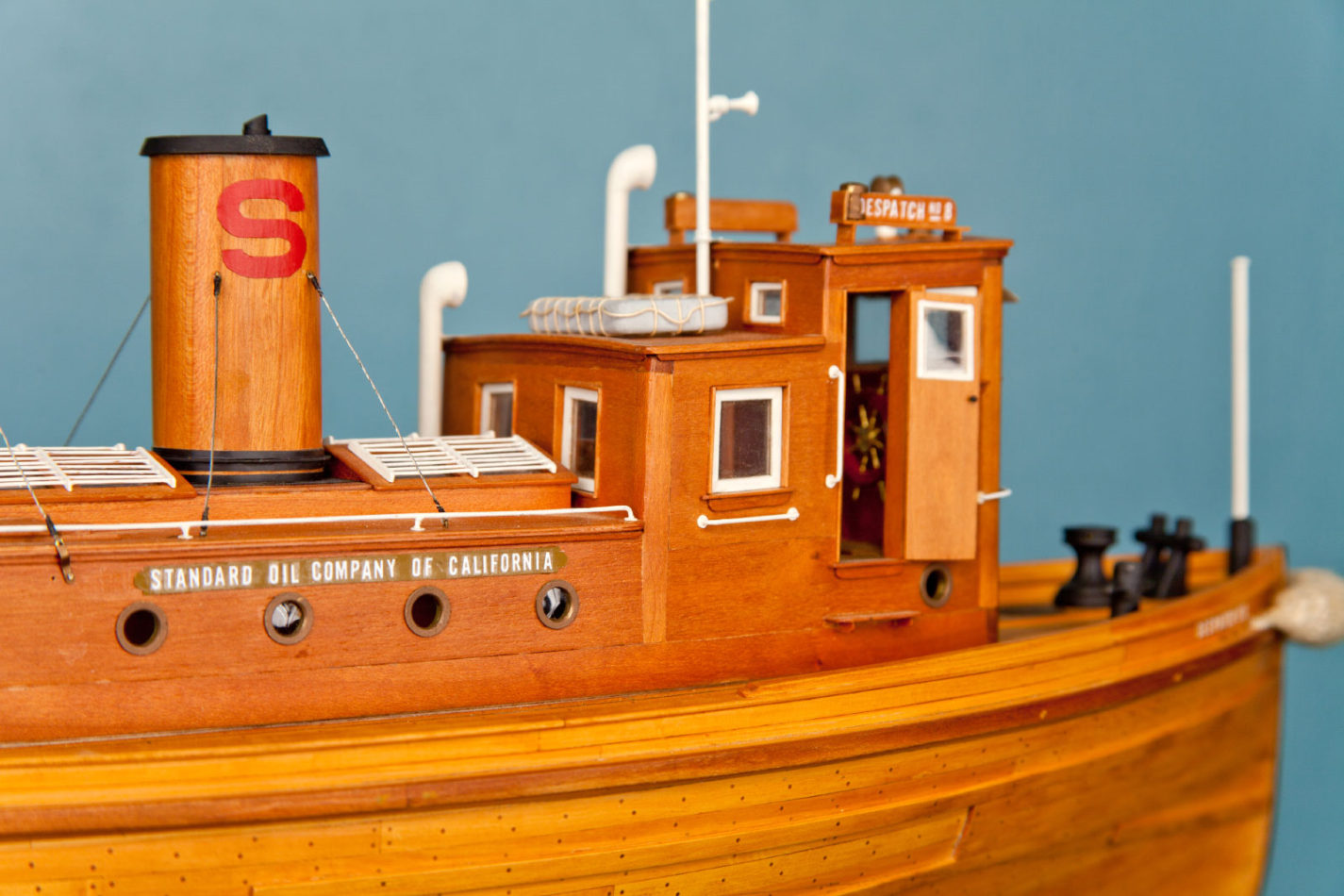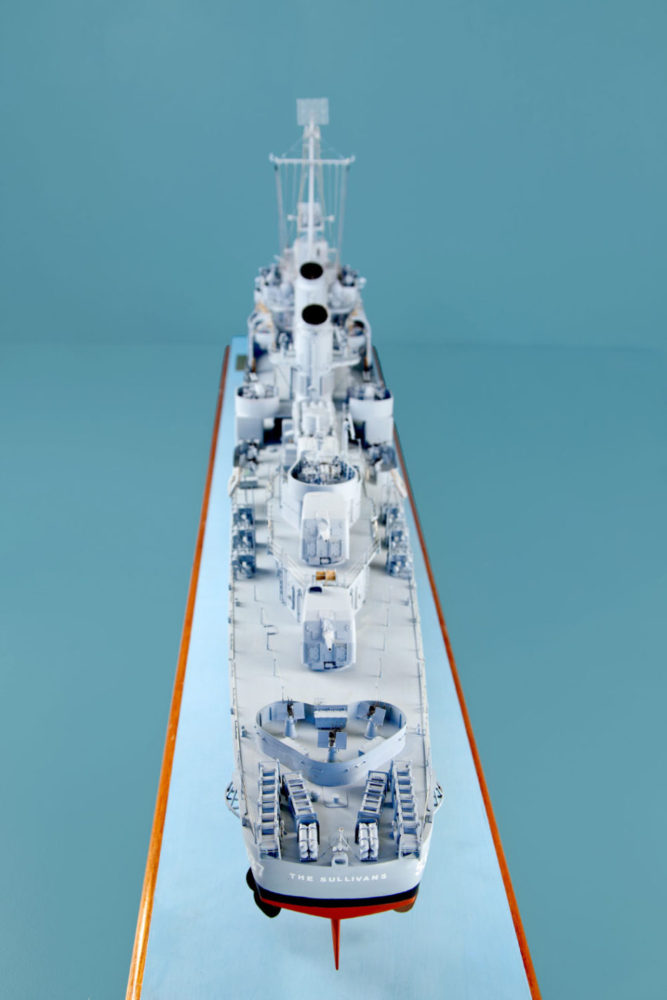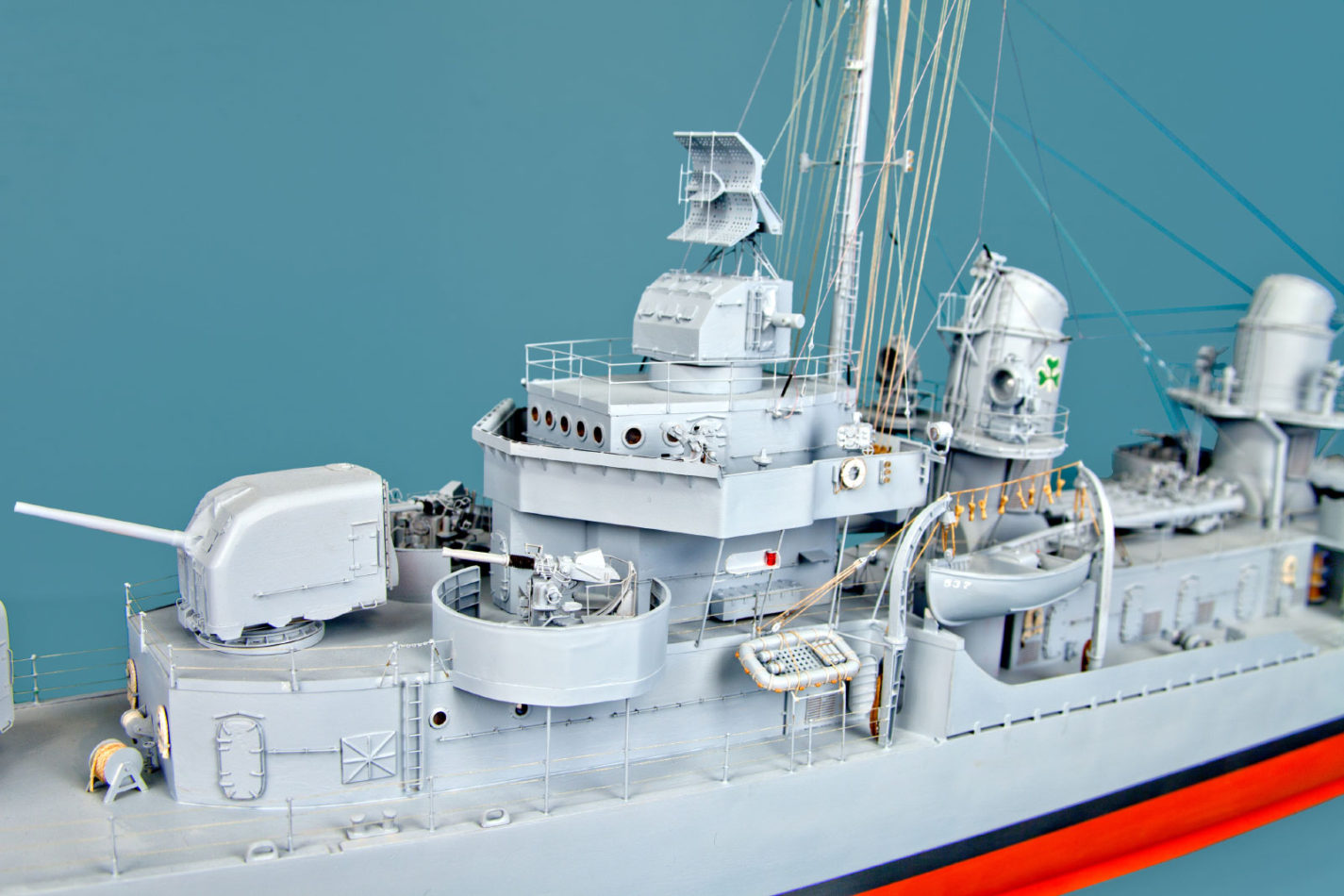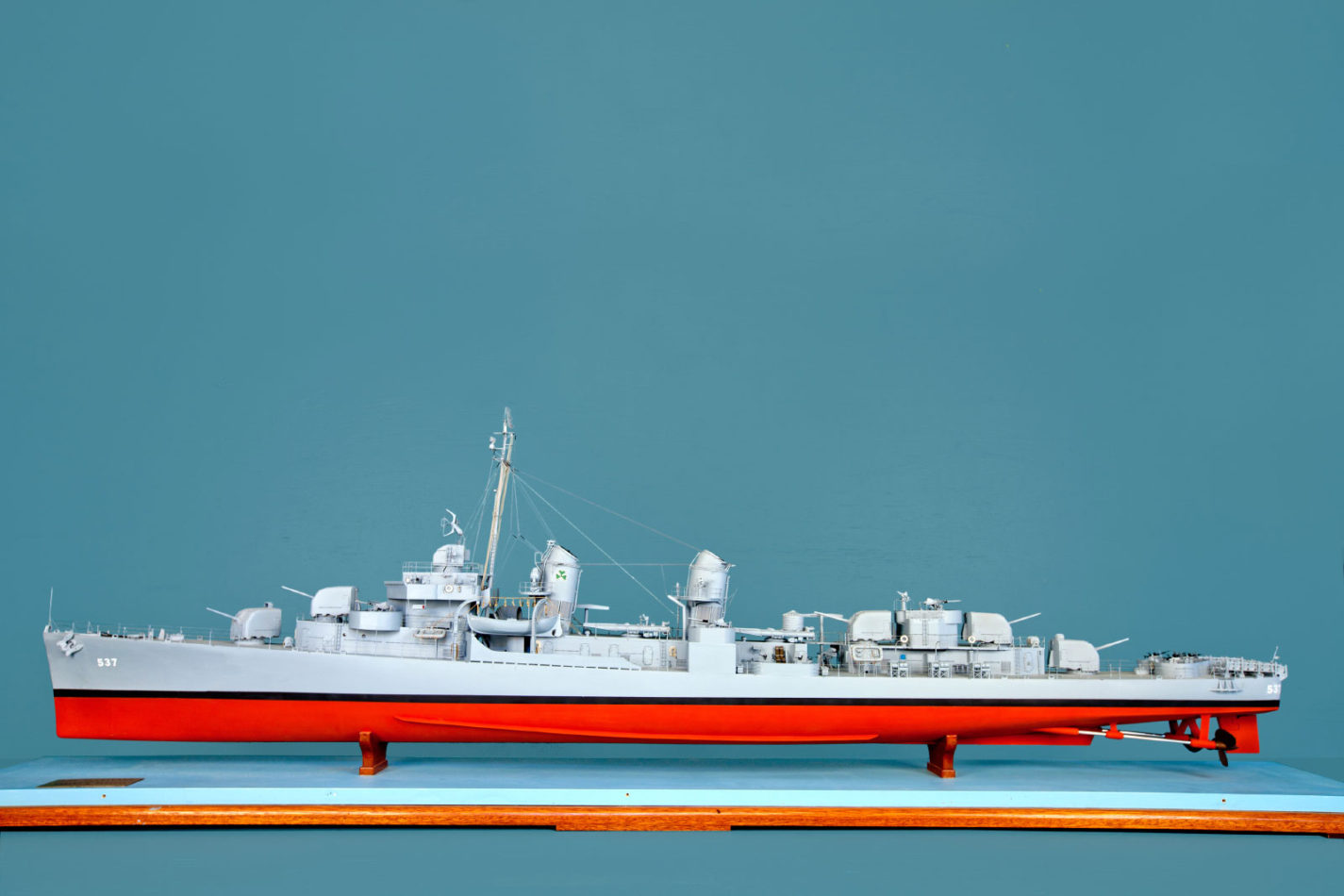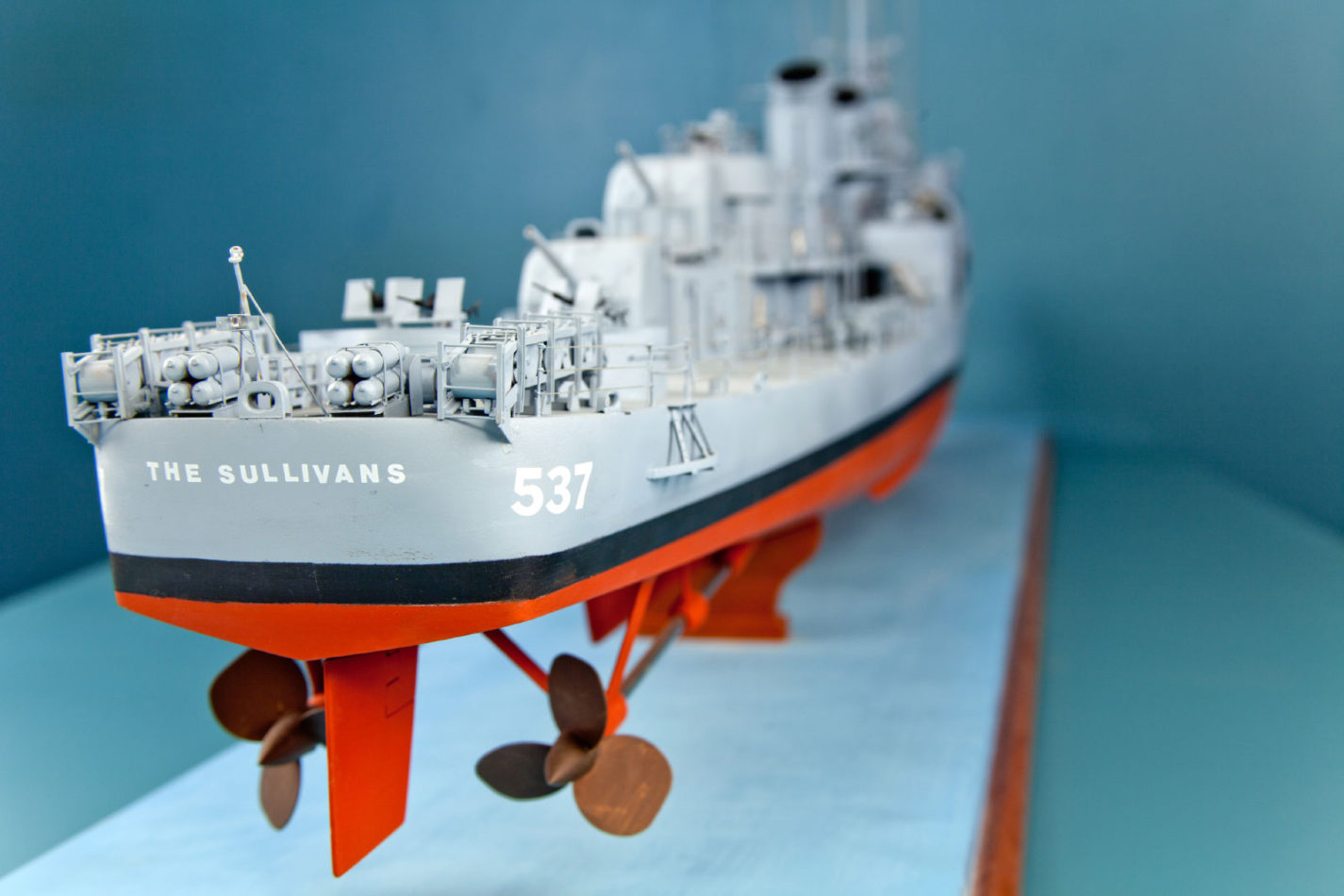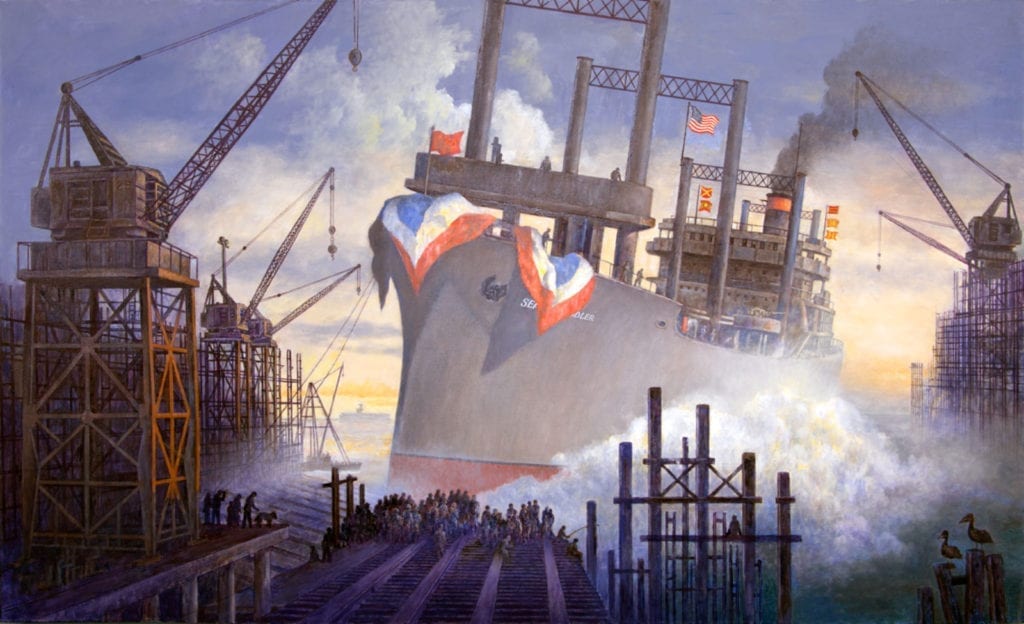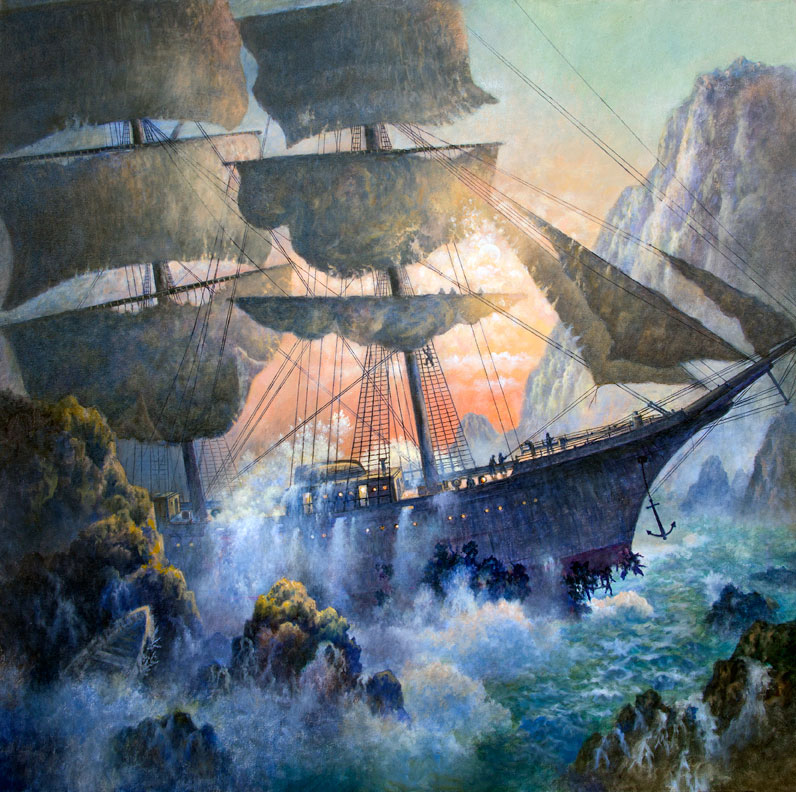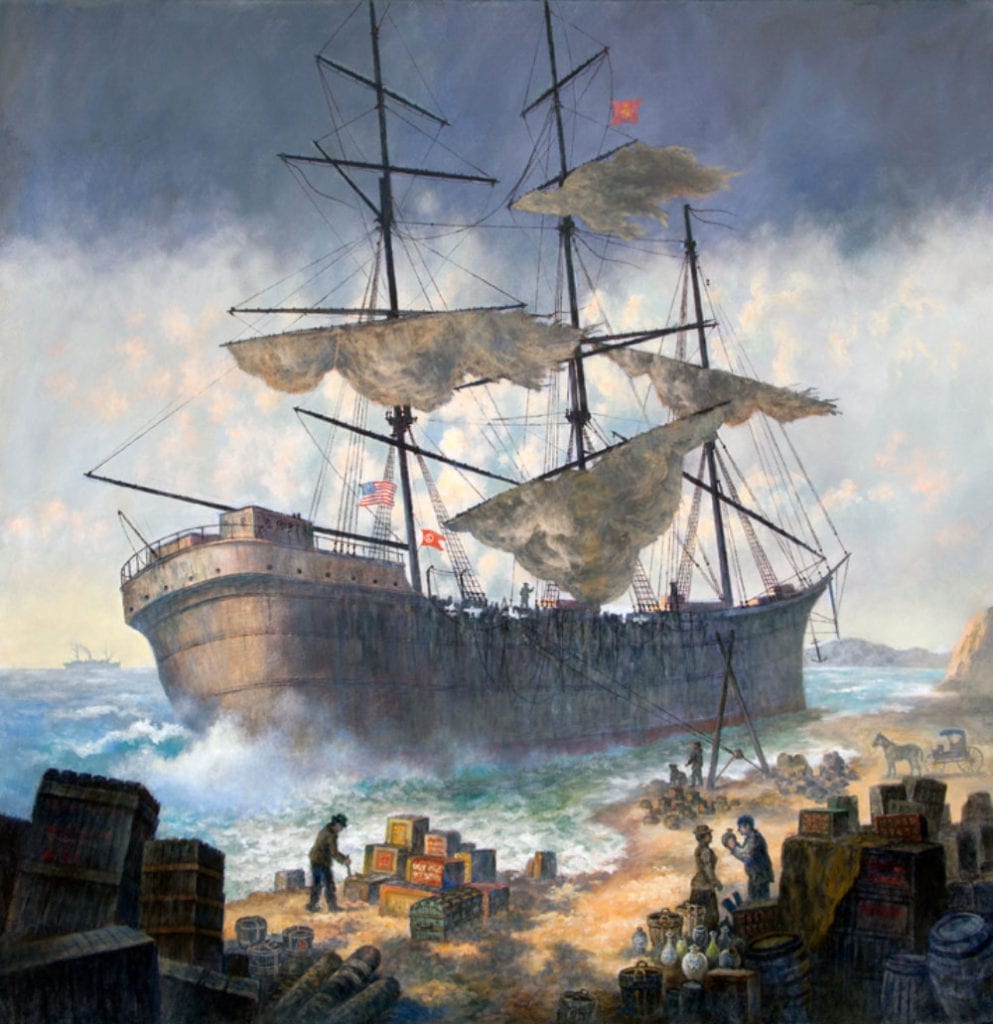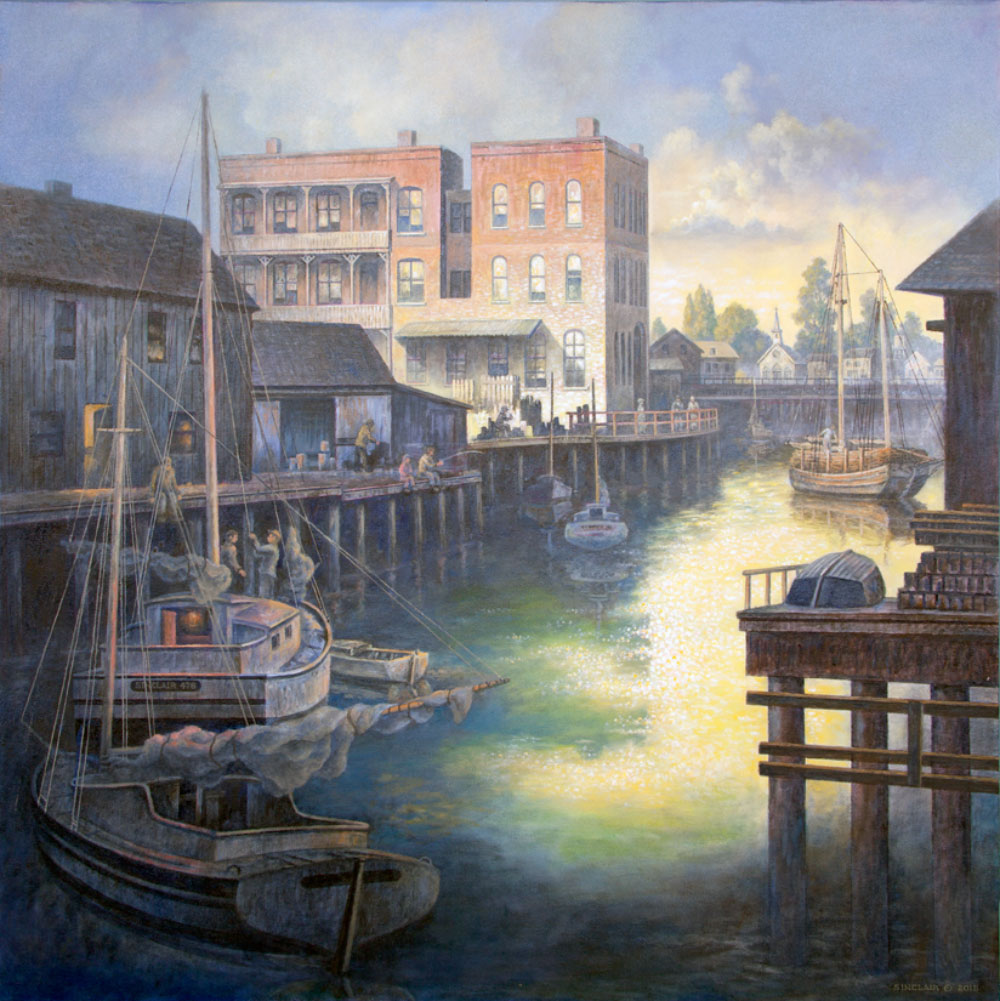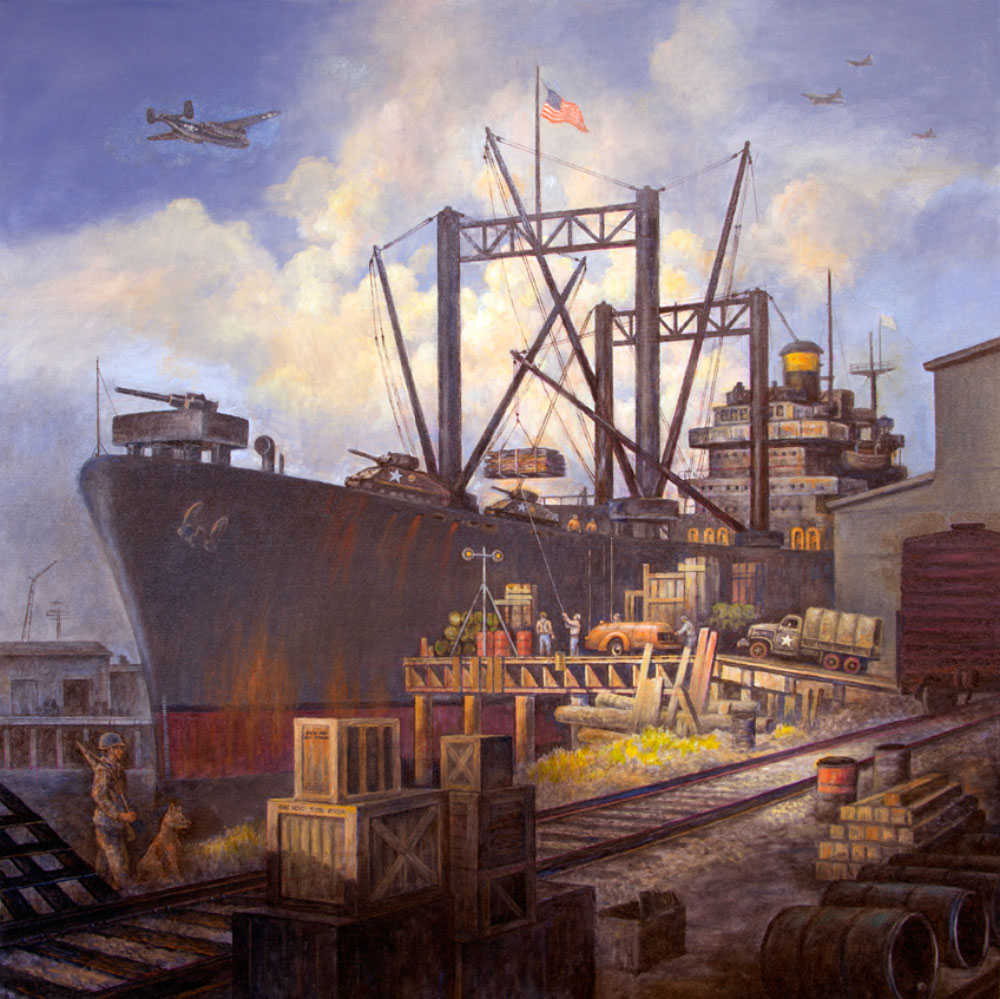Related School Program
Exhibits
Charles Parsons'
Ships of the World
Handcrafted by San Carlos resident Charles Parsons, the 24 model ships highlight the importance of maritime history.
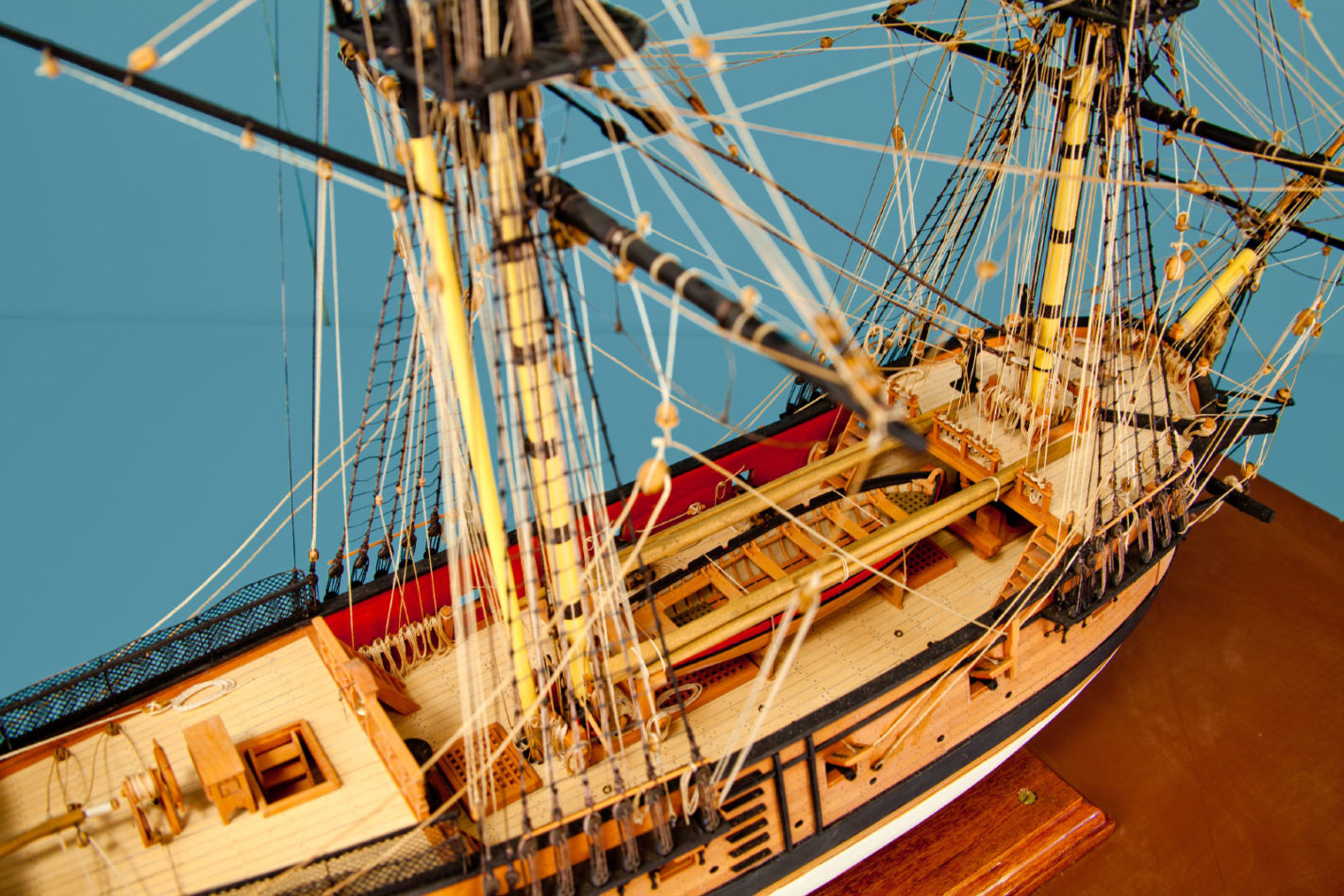
Detail of the deck of the San Carlos, the first ship to sail into the San Francisco Bay. Model created by Charles Parsons.
B ased on the plans of historic ships from a Greek trireme to a World War II destroyer, Charles Parsons created model ships. Together, they tell stories of maritime history on a local and international level. Models in the exhibit emphasize the importance of ships in exploration, war and business. They relate the reality of shipwrecks in maritime history. Paintings, artifacts and films help tell the maritime history of San Mateo County.
Explore the Exhibit
A multimedia experience where visitors of all ages can see what it was like to steer a ship’s wheel, use a pulley to load cargo, and see, up-close, a cannon recovered from the wreck of the Rydal Hall.
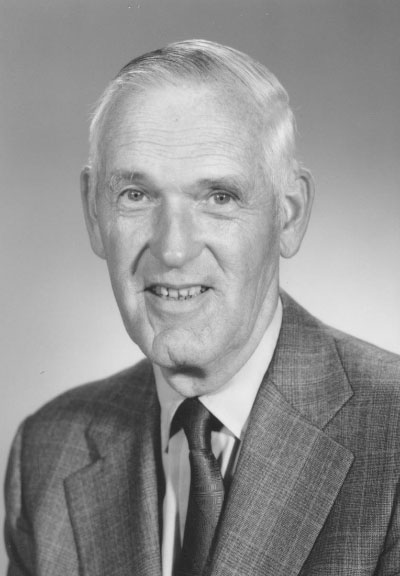
Golden Hind
Sir Francis Drake’s English galleon, the Golden Hind, sailed up the coast of California
The Golden Hind, the first English ship to sail around the world, started out from England in 1577 under the command of Francis Drake. Four other ships accompanied her.
A privateer, Drake sailed up the West Coast of South America, attacking several cities and capturing Spanish ships. He seized large quantities of gold, silver and jewels.
After passing the San Mateo County coast in 1579, Drake landed just north of San Francisco, probably near Drake’s Bay. Naming it New Albion, he claimed the land for England. The journal of the voyage describes “most stynkinge fogges” in the area.
Queen Elizabeth knighted Drake on his return to England in 1580. The queen’s share of his treasure was enough to pay off her foreign debt with a fortune remaining. The Golden Hind was on public display for approximately 100 years before she fell apart.
San Carlos
The San Carlos was the first ship to sail into San Francisco Bay.
The San Carlos was built in San Blas on the Pacific Coast of Mexico. Serving as the flagship of Spain’s California fleet, she carried troops, missionaries and supplies.
Seven years after her construction, she sailed north from Mexico under the command of Lieutenant Juan Manuel de Ayala. On August 5, 1775, the San Carlos was the first recorded ship to sail through the Golden Gate. The vessel anchored off Angel Island for six weeks while its launch explored and made the first chart of San Francisco Bay.
Ayala reported his findings to the viceroy in Mexico. On November 26, 1775, the viceroy wrote to Spanish authorities, “we know now that San Francisco can be called an excellent harbor: healthy, with fertile soil on its shores, and adequate for any demand we may wish to make upon it….” The next year, sites were selected for the San Francisco presidio and mission.
The San Carlos later wrecked in the Philippines.
Regenia “S”
The Regenia “S” was built in 1893 by William Munder. A 68-foot scow schooner, she was designed to navigate shallow waters of bays and rivers. Her homeport was San Francisco.
Scow schooners were the workhorses of the San Francisco Bay, carrying hay, lumber, grain, bricks and stone. In their heyday during the late nineteenth century, around 400 traveled the bay and surrounding waterways, stopping in ports such as Redwood City.
A similarly restored schooner, the Alma, can be seen at the Hyde Street Pier at the San Francisco Maritime National Historic Park.
Despatch No. 8
Despatch No. 8 would have been typical of the 65-foot wooden tugboats employed by Standard Oil of California, now Chevron. The company already had seven identical tug boats in service on San Francisco Bay.
The company’s Marine Department drafted drawings and specifications for Despatch No. 8. However, Standard’s Board of Directors stopped the building project before it could go out for bid as the Board had decided that all new tugs would be made of steel.
USS The Sullivans
The Sullivans was built at Bethlehem Shipyard in San Francisco. This 376-foot Navy destroyer was named in honor of the family who lost five sons when their ship was sunk at the Battle of Guadalcanal. She is the only United States Navy destroyer named after more than one person.
When the Sullivan family was in San Francisco to christen The Sullivans, they visited South San Francisco’s Belair Shipyard. Thomas Sullivan, the boys’ father, encouraged workers in their efforts as he commented, “If there had been more ships and planes at Guadalcanal last November, the Juneau might have been afloat today with our five sons aboard.”
The Sullivans served in the Pacific the last two years of World War II. During the Korean conflict, she engaged in shore bombardment. She also was part of the force that blockaded Cuba in 1962.
The Sullivans was decommissioned in 1965. A National Historic Landmark, the destroyer is open for tours in Buffalo, New York.
The Paintings of Fred Sinclair Jr.
Fred Sinclair Jr. created five paintings for the renovation of Charles Parsons’ Ships of the World to tell stories of local maritime history. Sinclair painted all five using acrylic and oil on canvas. For several of the paintings, historic photographs in the Association’s Archives and in the Redwood City Library Karl A. Vollmayer Local History Room served as guides. As no photographs exist of the wreck of the Rydal Hall, Sinclair used descriptions in JoAnn Semones’ book Hard Luck Coast: The Perilous Reefs of Point Montara to direct his work. Sinclair enjoyed the scale of the paintings and the challenge to define the subject in a dramatic, vibrant painting style.
History Museum Quiz
Take our quiz and test your knowledge on Charles Parsons’ Ships of the World.

